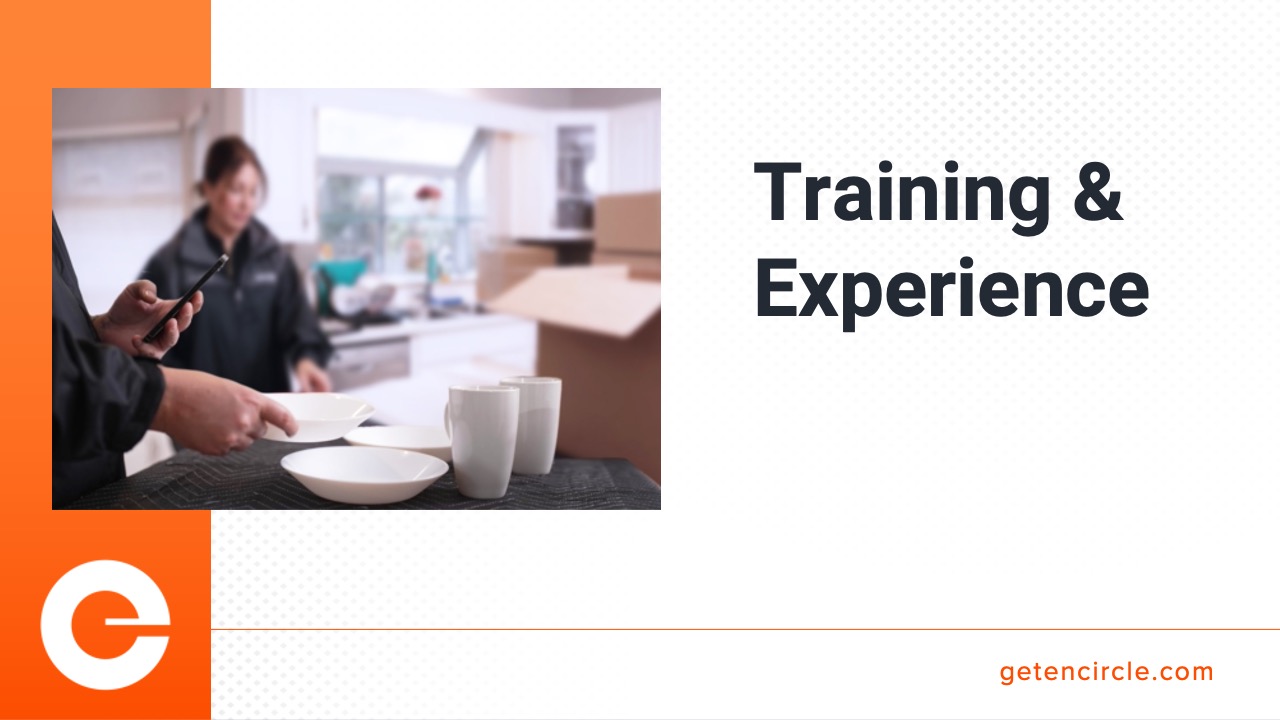The emotional backbone of contents restoration
Contents restoration is more than packing stuff into boxes or cleaning and fixing things up. It's about saving memories that matter to your customers. Think about it: firefighters don’t rush in to save the floor; they save what’s precious to people — photos, heirlooms, you name it.
By focusing on what truly counts to your customers, you not only enhance your business's reputation, but also position yourself as a crucial part of their recovery. Let’s explore how to avoid common setbacks that might stand in your way.
Challenge #1: Not documenting restoration work properly
You’ve heard it before, but we can’t stress it enough: document, document, document.
Documenting every detail is non-negotiable. It speeds up claims, showcases your professionalism, and prevents misunderstandings. Here’s a shortcut: use Encircle to streamline this process, making sure nothing gets missed.
Real-World Win: Pure Restore tackled the massive job influx from the Marshall Fire with the help of Encircle. Their detailed documentation sets a gold standard for handling high-stakes situations. Check out their story to see these best practices in action: Pure Restore uses Encircle to handle Marshall Fire job influx
To help speed up your documentation process without sacrificing accuracy, check out this Quick Tip video:

Challenge #2: Setting up a solid contents packout process
When everyone’s doing their own thing, mistakes are bound to happen. Having a consistent contents packout process and clear guidelines can make all the difference. Here's how:
- Create and share a “Do Not Touch” list: This is about smart risk management. Include items like jewelry, collectibles, and firearms — anything that requires specialized handling. This list helps protect your team and builds customer confidence by showing your attention to detail.
- Use one place for all info: Keep all packout-related information, including photos and inventory lists in one centralized hub. It helps prevent mix-ups and makes work faster.
- Define roles clearly: Make sure every team member knows their part.
- Help your customer help themselves: Give them detailed info about items that can’t be saved. This helps them with their insurance claim and shows you’re there to help.
- Foster continuous improvement: Encourage feedback and suggestions from your team to refine your packout procedures. Regularly reviewing and updating your processes based on real-world experiences will lead to smoother operations.
For an in-depth "Do Not Touch" list and tips for using Encircle to document non-restorables, check out our "Winning at Documentation" ebook — plus earn 5 IICRC CE credits 💪
Challenge #3: Dropping the ball on communication
Poor communication is more than a minor inconvenience; it can derail restoration jobs fast. Keep everyone in sync with these key steps:
- Establish regular update meetings: Hold quick, regular meetings with your team and key stakeholders. Use this time to provide progress updates, address concerns, and adjust plans as necessary. Consistency in communication keeps everyone on the same page and builds trust.
- Create a communication protocol: Have a guide for who, when, and how to communicate, detailing contact methods for different scenarios.
- Provide customer service training: Teach your team to listen, show empathy, and explain things simply. Good communication can turn challenges into positive outcomes.
Great communication leads to better teamwork, happier clients, and a smoother path to project completion.
Challenge #4: Not training your restoration team
Training is key for everyone, from field techs to owners and managers. Barb Jackson of Total Contentz, emphasizes the critical role of empathy and customer service. Understanding the dynamics among homeowners, insurance carriers, and adjusters makes sure work is scoped and priced not just for efficiency but with fairness and sensitivity.
- Always be learning: Everyone needs ongoing training to keep up with new tech and methods. It's good for growth and team spirit.
- Empathy in action: The emotional toll on homeowners after a disaster can't be overstated. Training your team to recognize the sentimental value behind items and to talk about non-restorables in an empathetic way matters, and helps build trust.
- Let tech help you: Using tools like Encircle for documenting non-restorables can simplify this aspect of restoration work. Training your team to effectively document non-restorables makes the experience less stressful for all stakeholders.
In this video, Barb and Coyne Borree, Founder and CEO of Midwest Restoration, talk about the crucial role of training resources for contents packouts.

Bridge the gap between doing a job and making a meaningful difference
When you do contents right, you can grow your referral business, grow your reputation for delivering great service, and increase the money you make at the end of the day.
Most of the great restoration companies that have grown in size and profitability have done it using the contents service as the emotional connection to the customer. When you restore a great-grandmother’s china set that the customer thought was lost forever, or save the growth chart of a family that came off the wall, you changed the life of the customer — that’s the real power of contents restoration.
Learn the ins and outs of contents processing and packouts
Our Contents Restoration Bootcamp, guided by Certified Restorers Barb Jackson & Kris Rzesnoski, offers a deep dive into not just the technicalities of contents restoration but also the soft skills that make your restoration business stand out.
Learn proven packout procedures, streamline your systems, and master both new tech and timeless techniques, plus earn 4 free IICRC CE credits.
 By: The Encircle Team
By: The Encircle Team